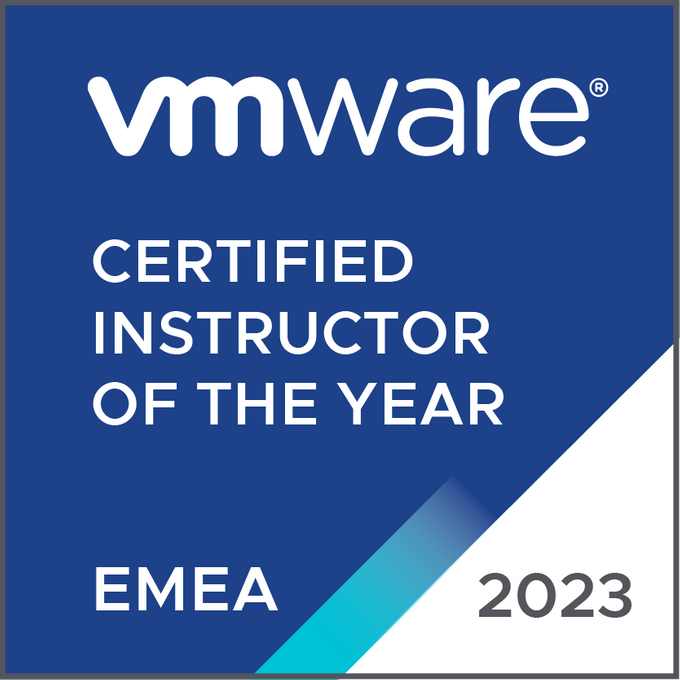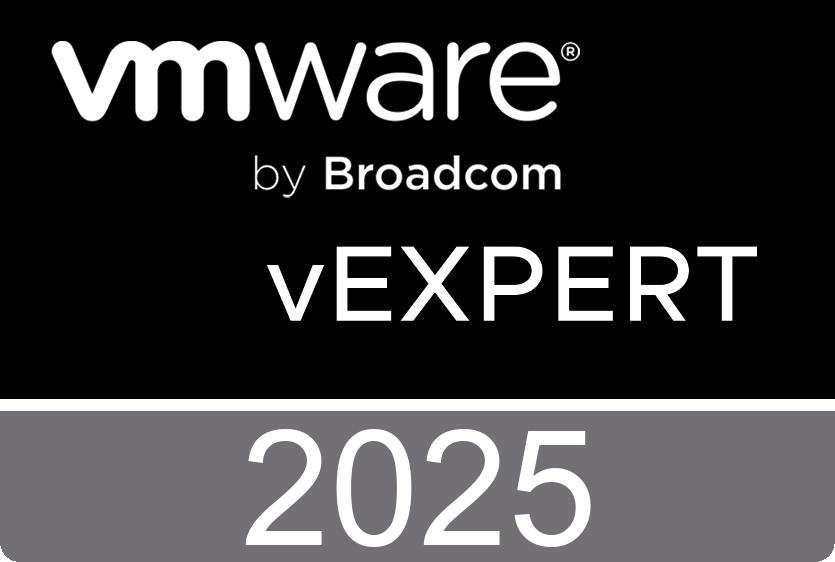July ’08 is a busy moth at Palo Alto, VMware just released the update 2 for VMware ESX server 3.5 and Virtual center Server 2.5 and the free VMware ESXi Installable.

VMware VirtualCenter 2.5 Server Latest Released Version: 2.5 Update 2 | 07/25/08
VMware ESX 3.5 Server Latest Released Version: 3.5 Update 2 | 07/25/08
VMware ESXi Installable Latest Released Version: 3.5 Update 2 | 07/25/08
What's New
· Windows Server 2008 support
· VMotion Compatibility
· Storage VMotion
· VSS quiescing support
· Hot Virtual Extend Support
· 192 vCPUs per host
· 8Gb Fiber Channel HBAs
· SAS arrays
· 10 GbE iSCSI initiator
· 10 GbE NFS support
· IBM System x3950 M2
· IPMI OEM extension support
· System health monitoring through CIM providers
· CIM SMASH/Server Management API
· Display of system health information
· Remote CLI
· HP Management Agents
· Solaris10 U5
· SUSE Linux Enterprise Server 10 SP2
· Ubuntu 8.04
· Driver updates
· Library update
· VMware High Availabilty (HA)
Windows Server 2008 support – Windows Server 2008 (Standard, Enterprise, and Datacenter editions) is supported as a guest operating system. With VMware’s memory overcommit technology and the reliability of ESX, virtual machine density can be maximized with this new guest operating system to achieve the highest degree of ROI. Guest operating system customizations and Microsoft Cluster Server (MSCS) are not supported with Windows Server 2008.
VMotion Compatibility – Enhanced VMotion compatibility (EVC) simplifies VMotion compatibility issues across CPU generations by automatically configuring server CPUs with Intel FlexMigration or AMD-V Extended Migration technologies to be compatible with older servers. Once EVC is enabled for a cluster in the VirtualCenter inventory, all hosts in that cluster are configured to ensure CPU compatibility for VMotion. VirtualCenter will not permit the addition of hosts which cannot be automatically configured to be compatible with those already in the EVC cluster.
Storage VMotion – Storage VMotion from a FC/iSCSI datastore to another FC/iSCSI datastore is supported. This support is extended on ESX/ESXi 3.5 Update 1 as well.
VSS quiescing support – When creating quiesced snapshot of Windows Server 2003 guests, both filesystem and application quiescing are supported. With Windows Server 2008 guests, only filesystem quiescing is supported. For more information, see the Virtual Machine Backup Guide and the VMware Consolidated Backup 1.5 Release Notes.
Hot Virtual Extend Support – The ability to extend a virtual disk while virtual machines are running is provided.
192 vCPUs per host – VMware now supports increasing the maximum number of vCPUs per host 192 given that the maximum number of Virtual Machines per host is 170 and that no more than 3 virtual floppy devices or virtual CDROM devices are configured on the host at any given time. This support is extended on ESX 3.5 Update 1 as well.
Hardware Enablement and Management:
8Gb Fiber Channel HBAs – Support is available for 8Gb fiber channel HBAs. See the I/O Compatibility Guide for ESX Server 3.5 and ESX Server 3i for details.
SAS arrays – more configurations are supported. See the Storage/SAN Compatibility Guide for ESX Server 3.5 and ESX Server 3i for details.
10 GbE iSCSI initiator – iSCSI over a 10GbE interface is supported. This support is extended on ESX/ESXi 3.5 Update 1 as well.
10 GbE NFS support – NFS over a 10GbE interface is supported. IBM System x3950 M2 – x3950 M2 in a 4-chassis configuration is supported, complete with hardware management capabilities through multi-node Intelligent Platform Management Interface (IPMI) driver and provider.
Systems with up to 32 cores are fully supported - Systems with more than 32 cores are supported experimentally.
IPMI OEM extension support – Execution of IPMI OEM extension commands is supported. System health monitoring through CIM providers - More Common Information Model (CIM) providers are added for enhanced hardware monitoring, including storage management providers provided by QLogic and Emulex. LSI MegaRAID providers are also included and are supported experimentally.
CIM SMASH/Server Management API – The VMware CIM SMASH/Server Management API provides an interface for developers building CIM-compliant applications to monitor and manage the health of systems. CIM SMASH is now a fully supported interface on ESX Server 3.5 and VMware ESX Server 3i.
Display of system health information – More system health information is displayed in VI Client for both ESX Server 3.5 and VMware ESX Server 3i.
Remote CLI – Remote Command Line Interface (CLI) is now supported on ESX Server 3.5 as well as ESX Server 3i. See the Remote Command-Line Interface Installation and Reference Guide for more information.Management Agents Support.
HP Management Agents – HP Insight Management Agents provide server management capabilities for ESX Server hosts installed on supported server platforms. A new version, 8.1, is now supported.
Guest Operating System Support Solaris10 U5 - Both the 32-bit and 64-bit versions are supported.
SUSE Linux Enterprise Server 10 SP2 - Both the 32-bit and 64-bit versions are supported. The 32-bit version supports the VMware Virtual Machine Interface (VMI) and is hence performance-optimized for VMware environments.Ubuntu 8.04 - Both the 32-bit and 64-bit versions are supported. The 32-bit version supports the VMware Virtual Machine Interface (VMI) and is hence performance-optimized for VMware environments.
Service Console, driver and library updates Service Console Operating System Update - The ESX Server Console operating system has been updated to RHEL 3.0 U9. See the document Updated RPMs and Security Fixes for detailed information.
Driver updates - The tg3 driver has been updated to version 3.81c. The megaraid_sas driver has been updated to version 00.00.03.19.
Library update - StoreLib has been updated to version 2.51.
VirtualCenter 2.5 update 2 adds full support for monitoring individual virtual machine failures based on VMware tools heartbeats. This release also extends support for clusters containing mixed combinations of ESX and ESXi hosts, and minimizes previous configuration dependencies on DNS.
VirtualCenter 2.5 Update 2 extends support for alarms on the overall health of the server by considering the health of each of the individual system components such as memory and power supplies. Alarms can now be configured to trigger when host health degrades.
Guided Consolidation now provides administrators with the ability to filter the list of discovered systems by computer name, IP address, domain name or analyzing status. Administrators can also choose to explicitly add physical hosts for analysis, without waiting for systems to be auto-discovered by the Consolidation wizard. Systems can be manually added for analysis by specifying either a hostname or IP address. Multiple hostnames or IP addresses, separated by comma or semi-colon delimiters, may also be specified for analysis. Systems can also be manually added for analysis by specifying an IP address range or by importing a file containing a list of hostnames or IP addresses that need to be analyzed for consolidation. Guided Consolidation also allows administrators to override the provided recommendations and manually invoke the conversion wizard.
VirtualCenter 2.5 Update 2 provides the ability of creating a clone of a powered-on virtual machine without any downtime to the running virtual machine. Therefore, administrators are no longer required to power off a virtual machine in order to create a clone of it.
You can now automatically authenticate to VirtualCenter using your current Windows domain login credentials on the local workstation, as long as the credentials are valid on the VirtualCenter server. This capability also supports logging in to Windows using Certificates and Smartcards. It can be used with the VI Client or the VI Remote CLI to ensure that scripts written using the VI Toolkits can take advantage of the Windows credentials of your current session to automatically connect to VirtualCenter.
This release of the VMware Infrastructure 3 software suite also includes the following Plug-in Updates: update to VMware Converter Enterprise and An update to VMware Update Manager.



